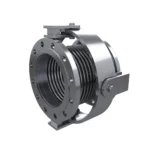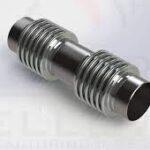Welcome back to our new blog on industrial rubber bellows, LETS START IT.
Rubber bellows may not be the most beautiful parts, but they are essential to many different uses in many different sectors. These simple, accordion-like devices provide an astounding range of advantages, from allowing fluid movement to safeguarding delicate equipment. In this essay, we explore the world of rubber bellows, looking at their design, uses, and important place in contemporary engineering.
Applications Across Industries.
- Mechanical and Manufacturing Industries: Industrial rubber bellows are commonly used to protect sensitive machinery from environmental factors such as dust, dirt, moisture, and chemicals. They shield equipment like shafts, bearings, and precision instruments, extending their longevity and ensuring consistent performance.
- Piping and Plumbing Systems: In pipelines and plumbing systems, rubber bellows help compensate for thermal expansion, contraction, and misalignment. They absorb movement and pressure changes, reducing the risk of pipe failure, leaks, or cracks.
- Automotive and Transportation: In the automotive and transportation sectors, rubber bellows find applications in steering systems, exhaust systems, and air intake systems. They absorb vibrations, mitigate noise, and facilitate the efficient flow of fluids and gases.
- HVAC (Heating, Ventilation, and Air Conditioning): Rubber bellows are vital in HVAC systems to absorb vibrations caused by temperature fluctuations and mechanical movements. This prevents excess stress on components, reduces noise, and ensures a longer operational life.
- Medical and Laboratory Equipment: Delicate medical and laboratory equipment, such as microscopes and analytical instruments, benefit from rubber bellows’ ability to protect against contamination and vibrations, enabling accurate and reliable measurements.
Types of Industrial Rubber Bellows
-
Single Arch Bellows: These bellows consist of a single convolution and are ideal for applications that require minimal movement absorption. They are commonly used in exhaust systems and lightweight machinery.
-
Multi-Arch Bellows: With multiple convolutions, these bellows can absorb more movement and are often employed in applications with larger displacements, such as HVAC systems and pipelines.
-
Tapered Bellows: These bellows have varying convolutions, allowing them to accommodate both axial and lateral movements. They are well-suited for applications with complex movement patterns.
-
Universal Bellows: Universal bellows can absorb movement in multiple directions, making them suitable for situations where movement occurs in various planes.
-
Gimbal Bellows: Gimbal bellows are designed to absorb angular movements, making them ideal for applications involving rotation and swiveling.
Conclusion
Industrial rubber bellows might not be the most high-profile components in the world of engineering, but their impact on various industries cannot be underestimated. From protecting machinery and equipment to facilitating fluid flow and mitigating vibrations, these adaptable devices are essential for maintaining efficient and reliable operations. As technology continues to evolve, industrial rubber bellows will undoubtedly adapt to new challenges, ensuring their continued role in supporting the intricate machinery and systems that power our modern world.






